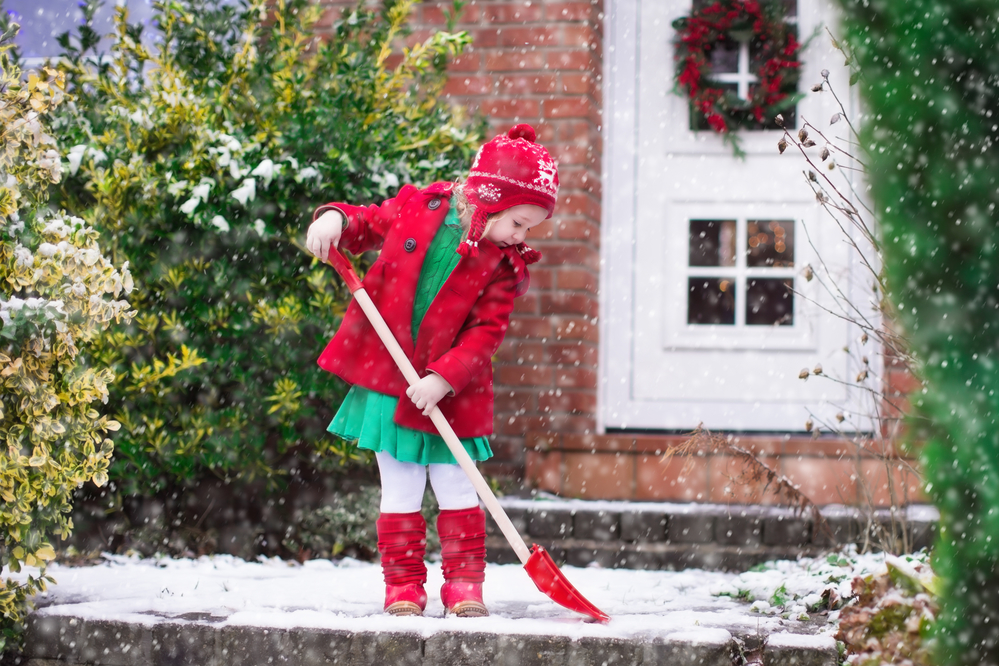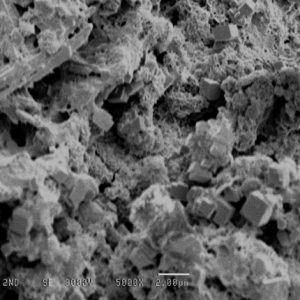Does winter weather cause concrete damage? You probably won’t be surprised to know that it can.

Our Utah winters typically result in the ground freezing to a depth of several feet. If you’re like many Utah residents, you may enjoy the winter weather and the accompanying deep freeze. However, frosty weather is the enemy to your concrete.
Though it may appear solid, concrete is quite porous. If you looked under a microscope, you would see countless tiny holes and pores. These holes mean that, when it rains or snows, water penetrates the surface.
When water freezes, it expands by about nine percent. Picture how ice cubes grow beyond the level you fill the ice trays and you’ll get the idea. When the ground freezes, so does the water trapped within your concrete slab. As this happens, it expands and puts pressure on the slab from within. This compromises the slab’s structural integrity and leads to damage.
When the ground freezes, so does the water trapped within your concrete slab. As this happens, it expands and puts pressure on the slab from within. This compromises the slab’s structural integrity and leads to damage.
Once the weather warms up and water in the slab begins to melt, the concrete can flake and crack. With successive freeze and thaw cycles, like we experience here in Northern Utah, concrete damage becomes progressively more likely to occur.
Many industry experts consider freeze-related concrete cracks and damage to be unavoidable. But, you can take steps to limit problems related to freezing and thawing.
Adding a penetrating sealer that bonds to the surface of your concrete may help prevent water from penetrating the slab. If rain and snow can’t easily penetrate the slab, freeze and thaw damage may be minimized.
Damage may also be minimized if you stop using deicing salts. Deicers turn ice and snow into a salty slush which can quickly infiltrate your slab, then refreeze. Instead of deicing salts, try spreading sand or fine gravel over the surface to provide additional traction.
Like it or not, our Utah winter weather causes cracking in driveways, sidewalks, patios and other concrete surfaces. So, once spring arrives, you may discover that you have damage, despite your best efforts to avoid it.
If that happens, the easiest and most economical way to handle the concrete damage is with slabjacking.
Slabjacking repairs cracks and settling by pumping a cement slurry or polyurethane foam down into the slab. This is done with just a few small, strategically placed holes. This mixture fills empty areas in the underlying soil, and the resulting pressure lifts and stabilizes the concrete.
Once the surface cracks and slabjacking holes are caulked, the damage will barely be noticeable. Slabjacking is much cheaper than pouring a new slab and, since the soil voids are filled, concrete damage is less likely to return when next year’s freeze and thaw cycles begin.
If you would like to learn more, Lift Right Concrete LLC offers free consultations to home and business owners throughout Utah. Our professional repair experts can assess your slab and suggest the most effective repair solutions. Contact our West Jordan or Grantsville office today to us to schedule an appointment to discuss your concrete damage.